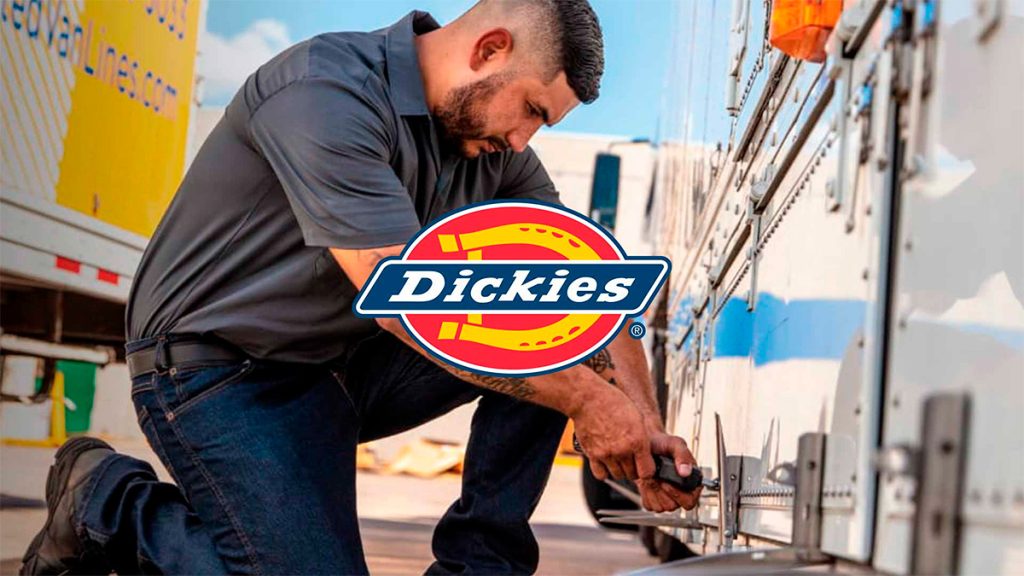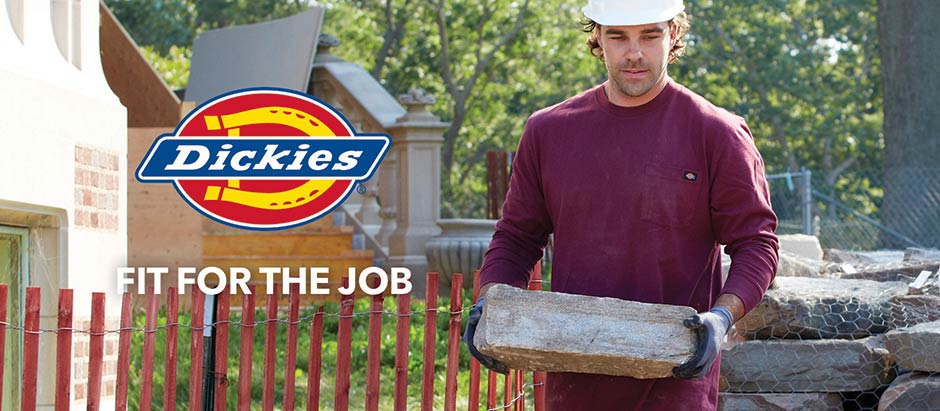
Dickies is a brand that has withstood the test of time, evolving from a small Texas-based company to a global icon synonymous with quality, durability, and authenticity. Established in 1922, Dickies has grown to become one of the most recognizable workwear brands in the world, with its products extending beyond the worksite to the streets of urban fashion.
In this blog, we’ll explore Dickies’ rich history, its pivotal role in the workwear industry, its integration into fashion culture, and how it continues to maintain relevance in today’s market. By the end, you’ll see why Dickies is not just a clothing brand, but a symbol of hard work, resilience, and style.
A Humble Beginning: The Birth of Dickies (1922)
Dickies was founded by C.N. Williamson and E.E. “Colonel” Dickie in 1922 in Fort Worth, Texas. The company began as a small manufacturer of bib overalls and work shirts, primarily aimed at providing durable clothing for blue-collar workers. At that time, the demand for tough, functional workwear was skyrocketing due to the rapid industrialization of the United States. Dickies, with its focus on quality craftsmanship, soon carved out a niche for itself.
The brand’s original goal was to create workwear that could withstand the harshest conditions. The innovation behind Dickies’ garments was the use of high-quality fabrics like denim, cotton twill, and canvas. These materials were durable yet comfortable, making them ideal for workers who needed clothes that could endure the rigors of labor without sacrificing comfort.
The Growth of a Workwear Giant (1930s – 1950s)
During the Great Depression, when many companies struggled to survive, Dickies experienced steady growth. The company’s reputation for durable, high-quality clothing made it a favorite among workers in industries such as agriculture, construction, and transportation. Dickies expanded its product line to include jackets, trousers, and other items designed for specific occupations.
By the 1940s, Dickies had become a staple of American workwear. The brand’s signature “red tag” became widely recognized as a symbol of strength and reliability. The introduction of the “1930s Workwear” collection, which included overalls, pants, and jackets designed for manual laborers, further solidified Dickies as the go-to choice for hard-working Americans.
As the country entered the post-World War II boom, Dickies continued to grow. The company expanded its operations, distributing its products nationwide, and began to diversify its customer base. Although the company initially targeted laborers, Dickies began reaching out to a broader range of workers, including those in factories, warehouses, and even the military.
Entering the Streetwear Scene (1960s – 1990s)
While Dickies had established itself as a trusted name in workwear, it wasn’t until the 1960s and 1970s that the brand began making waves outside of the workplace. The brand’s durability and practicality started to appeal to subcultures that valued functionality and utilitarian aesthetics. Skateboarders, punk rockers, and hip-hop artists began adopting Dickies as part of their everyday wardrobe, turning the brand into a symbol of youth rebellion and counterculture.
In the skateboarding scene, Dickies’ work pants, especially the brand’s iconic “874” pants, became a favorite due to their tough material and relaxed fit. As the skate culture grew in the 1980s and 1990s, Dickies’ status as a streetwear brand solidified. Skateboarders needed durable, functional clothing that could handle the wear and tear of their sport, and Dickies delivered just that.
Meanwhile, in the hip-hop community, Dickies became associated with the baggy, oversized style of the 1990s. Artists and fans of the genre, particularly those in the West Coast scene, adopted Dickies pants as a part of their “gangsta” style, which was characterized by bold, oversized clothing. Dickies was not just about comfort and durability anymore—it was about attitude, lifestyle, and a certain swagger.

The Rise of Dickies as a Fashion Icon (2000s – Present)
By the 2000s, Dickies had fully established itself as a global lifestyle brand, appealing to a wide range of consumers, including those who had no immediate connection to manual labor. The brand’s entry into the fashion world was marked by its collaborations with high-profile designers, streetwear labels, and artists. What started as a functional brand for hard-working Americans had now evolved into a cultural symbol that transcended its original purpose.
Collaborations with Designers and Artists
Dickies’ collaborations with designers like Supreme and Stüssy in the early 2000s signaled the brand’s full embrace of streetwear culture. These collaborations were a way to recontextualize the brand’s workwear roots in a high-fashion context, mixing Dickies’ utilitarian style with the high-fashion sensibilities of contemporary streetwear. These limited-edition releases were quickly snapped up by fashion enthusiasts, pushing Dickies into the spotlight in a whole new way.
Other notable partnerships included those with fashion heavyweights like Fear of God and BAPE, further cementing Dickies as a cultural icon. This move from workwear to fashion allowed the brand to reach a younger, fashion-conscious audience, many of whom had no direct connection to the world of labor.
The Streetwear and Skateboard Connection
The crossover between workwear and skate culture that had started decades earlier continued well into the 2000s and 2010s. Today, Dickies is a go-to brand for skaters who appreciate the durability and comfort of the pants, jackets, and shorts. The brand’s unassuming, practical designs, often featuring simple logo placements, are perfect for those who want style without flashiness.
Skaters and other young people are drawn to the minimalistic, no-nonsense aesthetic of Dickies. The brand’s aesthetic is effortlessly cool—it’s workwear, yes, but it’s also streetwear, and in the age of Instagram, that’s a powerful combination.
Sustainability and Ethical Practices
In recent years, Dickies has increasingly focused on sustainability and ethical manufacturing practices. With growing concerns over fast fashion and environmental impact, many consumers are looking for brands that prioritize eco-friendly processes. Dickies has started incorporating recycled materials into their garments and improving their supply chain to reduce their carbon footprint. This initiative is not just a reaction to market demands but also an acknowledgment of the brand’s role in shaping a better future for the industry and the planet.
Dickies Today: A Timeless Brand with a Modern Twist
In today’s market, Dickies continues to be a mainstay of workwear, streetwear, and casual fashion. The company has successfully straddled the line between functionality and style, offering clothing that is just as at home on a factory floor as it is on the streets of major cities.
The key to Dickies’ enduring success lies in its ability to adapt while staying true to its roots. The brand continues to innovate in design, whether through modernizing classic silhouettes or experimenting with new materials. Dickies also offers a wide variety of products, including durable pants, work shirts, outerwear, and accessories, with many of these products remaining virtually unchanged since the brand’s early days.
The rise of athleisure and casual wear has helped Dickies remain relevant, as consumers seek functional clothing that can be worn in both professional and casual settings. As more people work remotely or have casual dress codes in the office, Dickies’ versatile workwear pieces can easily transition from the workplace to casual social outings.
What Makes Dickies Stand Out?
Several factors contribute to Dickies’ success and longevity:
- Durability: At its core, Dickies remains a workwear brand, and the quality and durability of its products continue to be a major selling point. Whether it’s the legendary Dickies work pants or the timeless work jackets, the brand is known for making clothes that stand the test of time.
- Affordability: Unlike some high-end fashion brands, Dickies offers its products at an accessible price point, making it a go-to for both budget-conscious consumers and those looking for value without compromising on quality.
- Cultural Significance: From its roots in industrial America to its embrace of street culture, Dickies has embedded itself in different cultural movements over the years. Today, it holds a dual identity as both a symbol of blue-collar work ethic and street-smart style.
- Versatility: Dickies products are designed for both function and fashion. Their workwear roots give them practical appeal, while their crossover into fashion and streetwear makes them versatile and stylish enough for everyday wear.

Conclusion: A Brand for the Ages
From its origins as a small manufacturer of durable workwear to its current status as a global cultural phenomenon, Dickies has evolved in ways that its founders could never have imagined. It has navigated the changing tides of fashion and culture while never losing sight of its core principles of durability, quality, and reliability. Today, Dickies is more than just a workwear brand; it’s a cultural symbol and a style icon that resonates with people from all walks of life.
As the brand continues to expand its reach, adapt to the changing market, and explore new avenues of collaboration, one thing remains certain: Dickies will continue to be an enduring symbol of hard work, resilience, and style for generations to come.
